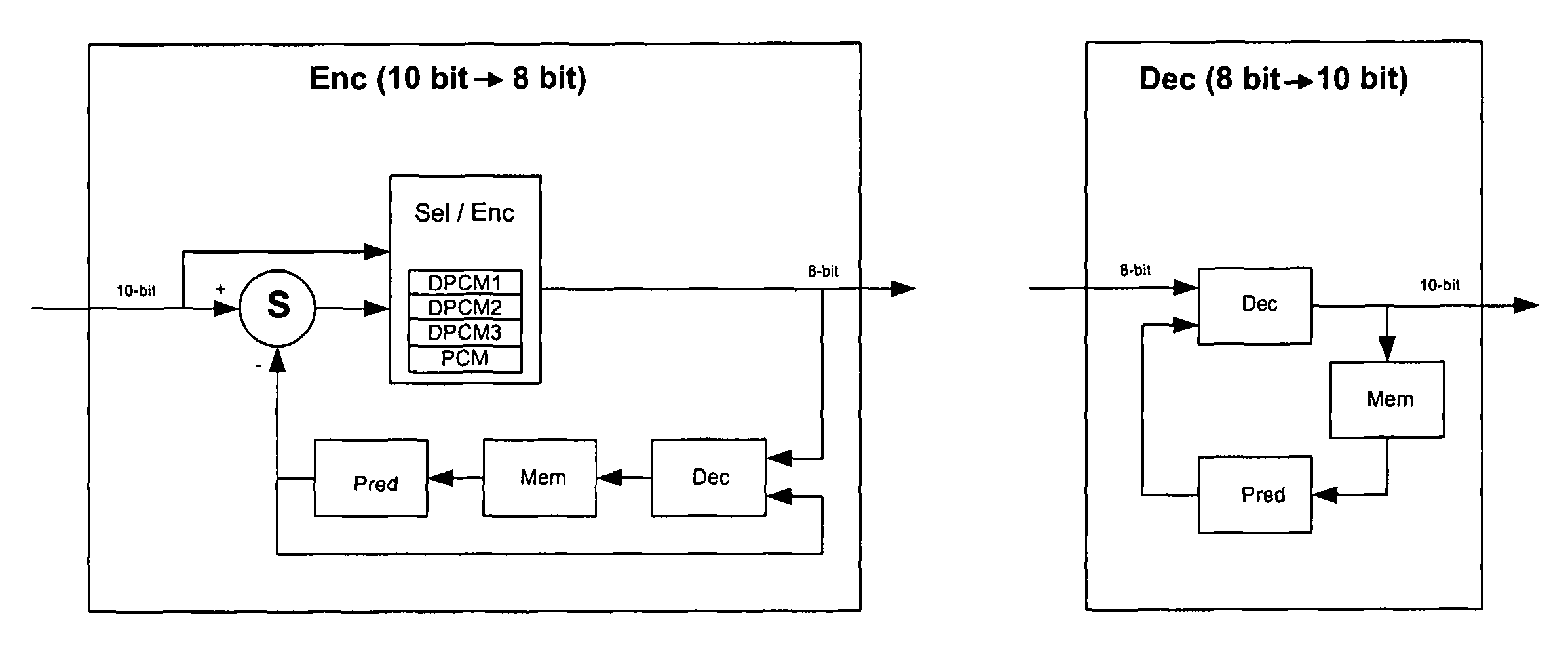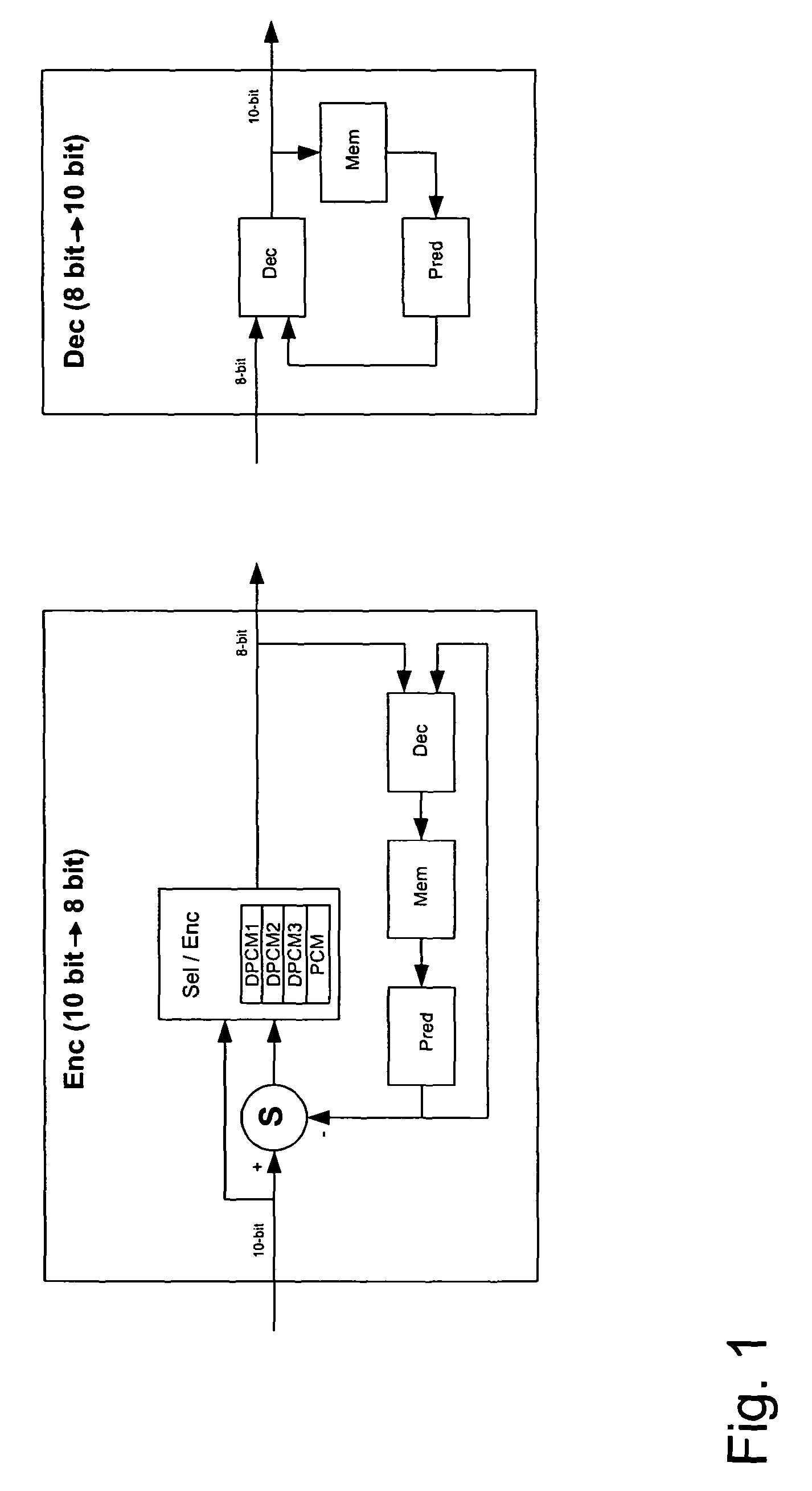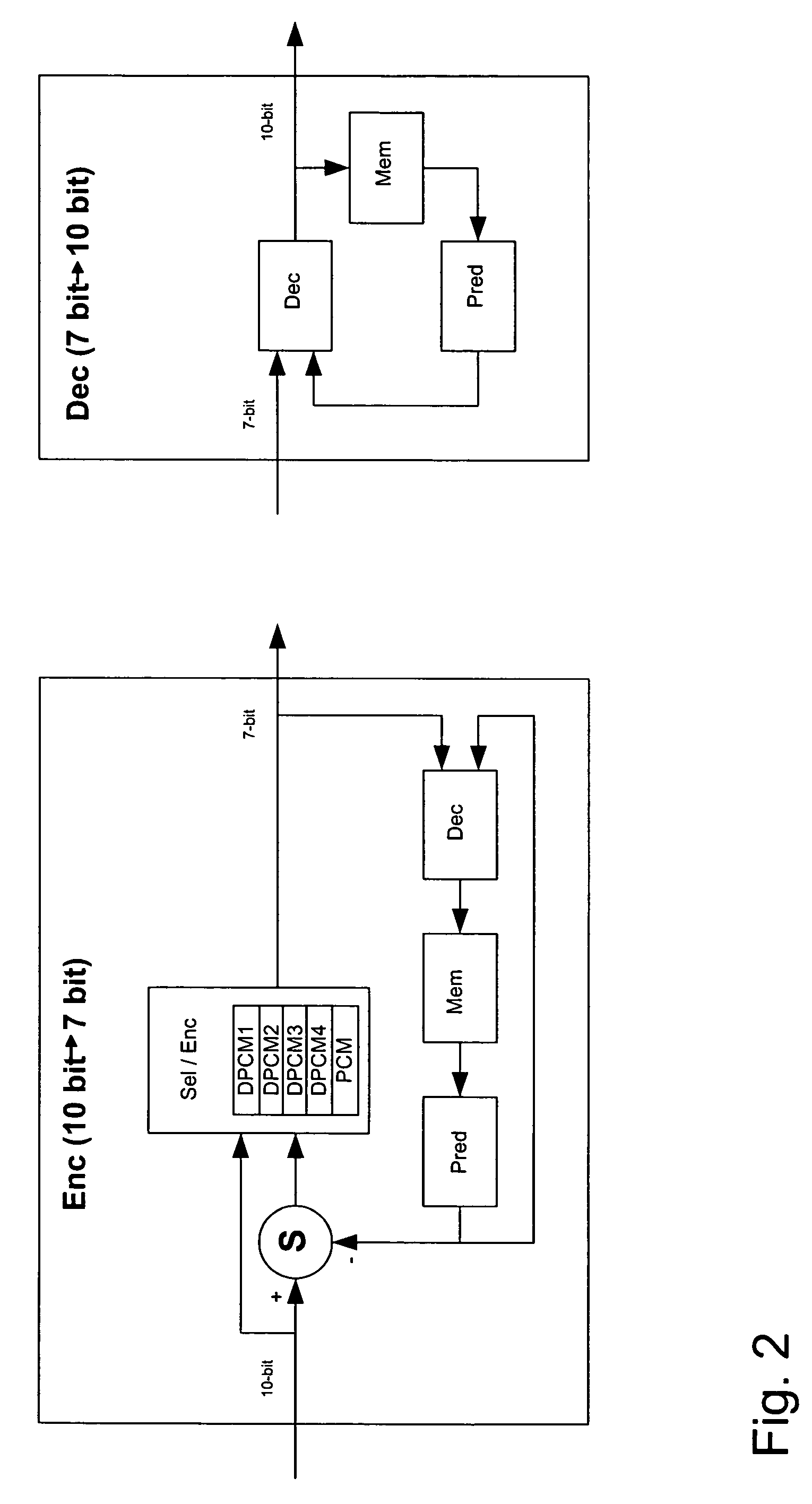Processing of images using a limited number of bits
a processing method and image technology, applied in the field of processing images, can solve the problems of reducing the quantity of data in a digital image, the problem of image transmission in the communication network, and the availability of communication channels, so as to achieve the effect of little memory capacity and fast encoded images without affecting the quality of images
- Summary
- Abstract
- Description
- Claims
- Application Information
AI Technical Summary
Benefits of technology
Problems solved by technology
Method used
Image
Examples
first embodiment
Case 1: First Embodiment PCM
else
[0054]Xenco(n)=“1 xxxxxxx”[0055]Xdeco(n)=8*value+4[0056]in which 1 is the code word indicating a change, “xxxxxxx” indicates, in seven bits, the value=(Xorig(n) / 8), the quantizer being 8. For example, when Xdiff(n)=520−527, then the encoded bit string is “1 1000001”.
[0057]The encoded bit string applying the PCM method comprises, as the first bit, the escape symbol code word 1, which has been selected so that more bits can be used for the encoding of the colour value than in DPCM methods. By this arrangement, it is possible to guarantee the image quality, because the bit resolution is reduced gradually more slowly than the number of colours is increased in the different encoding alternatives.
[0058]The pixels of the image line are coded in a corresponding manner to the end of the line (EOR), by encoding minor changes by the DPCM method and major changer by the PCM method. Correspondingly, the rest of the lines to the end of the image are processed indep...
second embodiment
Case 2: Second Embodiment
else
[0060]Xenco(n)=“1 s xxxxxx”[0061]Xdeco(n)=Xpred(n)+sign*(16*value+7)[0062]if Xdeco(n)>1023, then Xdeco(n)=1023[0063]if Xdeco(n)[0064]in which 1 indicates the code word, s represents the sign, and “xxxxxx” indicates, in six bits, the value=(abs(Xdiff(n)) / 16), the quantizer being 16. For example, when Xdiff(n)=528-543, then the encoded bit string is “1 0 100001”.
[0065]It can be seen that the sign bit s “eats” one bit of the value to be quantized, wherein the error with the DPCM codec is greater than with the PCM codec, because the quantizing must be greater. This is because the values to be transferred to the PCM and DPCM codecs are in the ranges [0, 1023] (10 bits) and [−1023, 1023] (11 bits), respectively.
[0066]In an advantageous embodiment of the invention, the escape symbol used is the shortest code word “1”, as presented above. Although the escape symbol is not the most probable symbol, its choice will result in a situation that the quantizing error i...
third embodiment
Case 3: Third Embodiment
else
[0070]Xenco(n)=“1 s xxxxxx”[0071]in which 1 indicates the beginning of the code word, s represents the sign, and “xxxxxx” indicates, in six bits, the value=(abs(Xdiff(n)) / 8), the quantizer being 8.[0072]These high absolute values should be encoded by using values which are not otherwise used in predicting encoding. The example below presents first the change of the range and the decoding.[0073]if value==64 then value=0[0074]if value>64 then value=128−value, and the sign is changed[0075]For example, when abs(Xdiff(n))=528-543, then the encoded bit string is “1 1 111110”.[0076]In the decoding, the following steps are taken:[0077]if value=0 then[0078]Xdeco(n)=Xpred(n)+sign*(8*64+7)[0079]else[0080]Xdeco(n)=Xpred(n)+sign*(8*value)[0081]if Xdeco(n)[0082]Xdeco(n)=Xdeco(n)+1024+3[0083]but if Xdeco(n)>1023 then[0084]Xdeco(n)=Xdeco(n)-1024-3[0085]else[0086]Xdeco(n)=Xdeco+sign*3[0087]if Xdeco(n)>1023, then Xdeco(n)=1023[0088]if Xdeco(n)
[0089]FIG. 1 shows an advantag...
PUM
 Login to View More
Login to View More Abstract
Description
Claims
Application Information
 Login to View More
Login to View More - R&D
- Intellectual Property
- Life Sciences
- Materials
- Tech Scout
- Unparalleled Data Quality
- Higher Quality Content
- 60% Fewer Hallucinations
Browse by: Latest US Patents, China's latest patents, Technical Efficacy Thesaurus, Application Domain, Technology Topic, Popular Technical Reports.
© 2025 PatSnap. All rights reserved.Legal|Privacy policy|Modern Slavery Act Transparency Statement|Sitemap|About US| Contact US: help@patsnap.com



